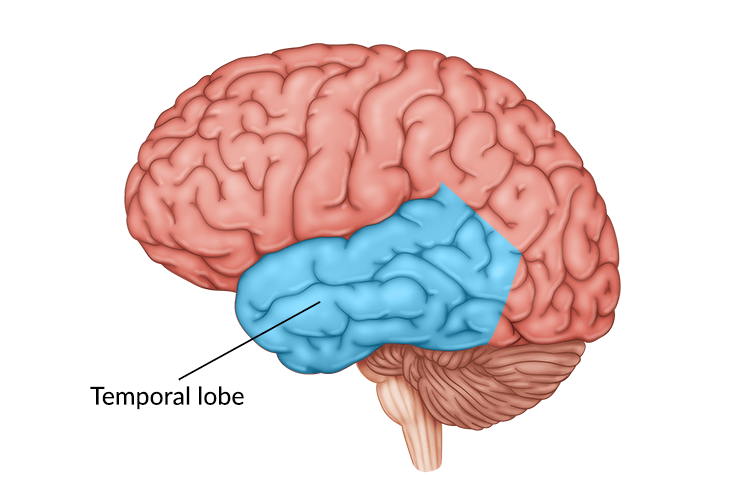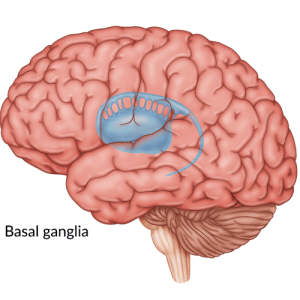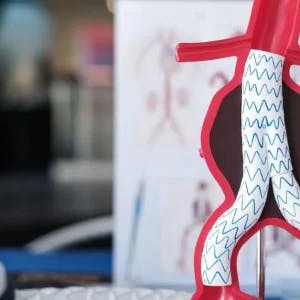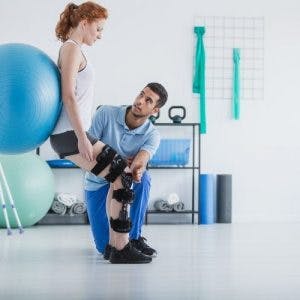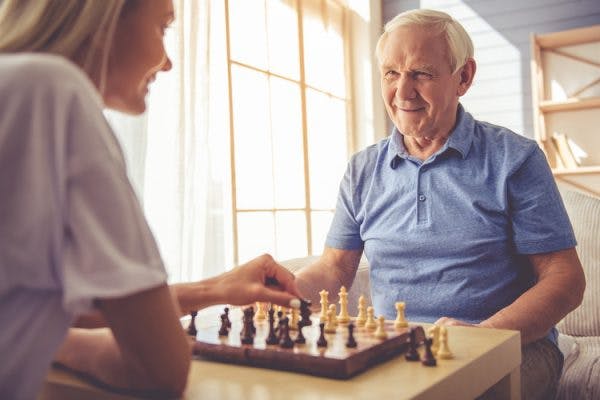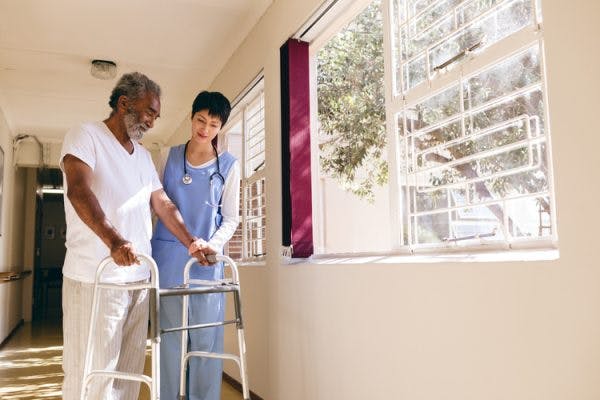The brain’s temporal lobe performs a variety of roles that affect physical, cognitive, and emotional factors. Therefore, a temporal lobe stroke can affect many important functions like auditory processing (hearing), memory, language, and emotion.
Although the lobes of the brain generally perform a specific set of functions, every individual’s brain is unique. Therefore, each survivor of temporal lobe stroke may experience side effects differently. For example, some survivors may struggle primarily with memory while others have completely different symptoms.
While this is not a definitive guide to temporal lobe stroke, we will review the functions of the temporal lobe as well as possible secondary effects survivors may experience. Additionally, we will discuss the recovery process and treatment methods to help maximize recovery.
Causes of Temporal Lobe Stroke
The temporal lobe is the second largest lobe in the brain and is one of the lobes that help make up the cerebral cortex. This lobe is located in each hemisphere, or half, of the brain and sits behind the ears in the lower region of the brain.
The brain’s temporal lobe plays a key role in processing auditory input, acquiring and retaining memory, and understanding language. Additionally, the temporal lobe plays a valuable part in our emotions and social interactions. Overall, this area of the brain is responsible for many different functions. Therefore, a stroke in the temporal lobe can be accompanied by a wide variety of secondary effects, which we will discuss shortly.
Temporal lobe stroke occurs when a blood vessel in the temporal lobe becomes obstructed (ischemic stroke), or bursts (hemorrhagic stroke). Blood is rich in oxygen, which fuels cellular activity. When the brain doesn’t receive a sufficient supply of blood, those brain cells start to die and the affected areas of the brain will begin to lose function.
A stroke is a medical emergency, and it is crucial to receive medical attention as soon as possible to restore blood flow to the brain and decrease the severity of secondary effects. This is why education on stroke warning signs and quick detection of these symptoms is so important. The impairments caused by a stroke depend upon the speed of treatment, the severity of the stroke, and other factors.
Secondary Effects of Stroke in the Temporal Lobe
As we have discussed previously in this article, the temporal lobe plays a role in many different physical, cognitive, and emotional functions. The secondary effects of a temporal lobe stroke are directly related to the function of the temporal lobe itself, impacting a survivor’s hearing, memory, language, and emotions.
Due to the location of the temporal lobe in each hemisphere of the brain, it is also important to note that this type of stroke can be divided into left and right temporal lobe stroke. Depending on which hemisphere of the brain is affected, this can result in different symptoms for survivors.
For example, individuals who experience left temporal lobe stroke may exhibit greater impairment in language and memory of spoken information. On the other hand, right temporal lobe stroke may result in poorer visual memory and spatial awareness.
To help you better understand the possible outcomes after injury to the temporal lobe, here are the 6 most common secondary effects of a temporal lobe stroke:
1. Poor Memory
The hippocampus is a structure located inside the temporal lobe that is primarily responsible for learning and memory. Due to the location of the hippocampus, a stroke in the temporal lobe can affect past memories. Additionally, it can affect a survivor’s ability to learn and retain new information.
This can include difficulty remembering words, places, and how to perform skills that were once second nature to the individual. Disruption of memory due to temporal lobe stroke can be incredibly frustrating for both survivors and caregivers as they navigate this major change.
2. Inability to Recognize Faces (Prosopagnosia)
The temporal lobe also plays a large role in perception, which is closely tied to memory. As a result, some survivors of temporal lobe stroke experience a condition called prosopagnosia. This is characterized by difficulty recognizing faces, including faces of close family and friends.
Individuals affected by prosopagnosia may also have difficulty distinguishing between objects and understanding facial cues or expressions. This can lead to increased frustration with daily tasks and changes within personal relationships. Prosopagnosia is more common for survivors of right temporal lobe stroke.
3. Impaired Speech (Fluent Aphasia)
If a stroke occurs in the dominant side of the temporal lobe, it may affect Wernicke’s area. This part of the brain controls verbal and visual language skills and is generally located in the left hemisphere of the brain. When this area has been damaged by stroke, the survivor may struggle with speech difficulties known as aphasia. Specifically, survivors may exhibit Wernicke’s aphasia, which is also called fluent aphasia. This is especially common in individuals who experience a stroke in the left temporal lobe.
With fluent aphasia, the survivor may be able to speak fluently, or smoothly, but may use the wrong words. Here’s a video of a stroke patient affected by Wernicke’s aphasia, or fluent aphasia:
4. Difficulty with Visual Perception
While most visual disturbances after a stroke occur when the visual cortex has been damaged, temporal lobe stroke may lead to changes in visual perception. Memory, a primary function of the temporal lobe, is closely tied to visual perception. This is why perception is often challenging after this type of injury.
Symptoms can present as difficulty with attention to surroundings as well as poor interpretation of information about the survivor’s visual field. This is different from vision loss, which often occurs after strokes affecting other areas of the brain, such as the occipital lobe.
5. Trouble Processing Sound
Temporal lobe stroke can impair a survivor’s ability to process and recognize sounds. This is because the primary auditory cortex is located in this area of the brain. Injury to the temporal lobe can prevent the brain from determining between different sounds or correctly processing the sequence of those sounds.
The brain needs to derive meaning from sounds for them to have significance. Therefore, survivors may experience difficulty recognizing sounds or locating where they’re coming from. This is also closely tied to memory which, when negatively affected by stroke, can lead to impaired word recognition and language processing.
6. Emotional and Behavioral Changes
The amygdala is located inside the temporal lobe and is responsible for emotional responses. The amygdala helps process emotions, such as fear, and then relays signals to other areas of the brain. Interestingly, a stroke in the temporal lobe can affect emotions in different ways and lead to a variety of behavioral changes.
Every stroke is different, and every individual can experience different behavior changes after stroke. Additionally, it is important to remember that more than one area of the brain can be affected by a singular stroke. This means some stroke survivors may experience more aggressive behavior after stroke while others may become more passive.
Due to the effect on memory, temporal lobe stroke often leads to forgetfulness. This can be frustrating for the survivor as well as their caregivers. This can also lead to safety concerns and reduced independence. Furthermore, difficulty understanding facial expressions and cues can cause the survivor to appear apathetic or indifferent in social situations.
Instead of trying to predict which emotional or behavioral changes stroke patients may experience, it’s best to take action to address what does happen. To help you navigate life after stroke, we will now discuss the various ways your rehabilitation team may address these different secondary effects.
Rehabilitation for Temporal Lobe Stroke
Temporal lobe stroke affects every brain differently, so treatments will vary based on the symptoms experienced by each individual. Recovery from any type of stroke is a lengthy process and rehabilitation generally consists of multiple therapies and treatments. To help you know what to expect, let’s discuss some types of therapy that boost recovery.
Rehabilitation Methods
- Speech therapy can guide stroke survivors to overcome different types of aphasia, including Wernicke’s aphasia. Practicing specific speech therapy exercises helps survivors relearn the particular language skill that was impaired following temporal lobe stroke. Additionally, speech therapists can address any concerns regarding difficulty swallowing after stroke.
- Cognitive training may improve memory in some patients affected by temporal lobe stroke. While memory is not guaranteed to improve, cognitive training exercises can help improve recognition, which may help patients recognize faces or objects again.
- Occupational therapy is a valuable resource during recovery and can help set survivors and caregivers up for success. Occupational therapists can provide you with strategies to improve independence at home and help you perform activities of daily living.
- Psychotherapy may also benefit stroke survivors. Psychological care such as psychotherapy can provide new ways of coping with significant life changes and difficult emotions, such as grief after stroke.
- Audiologists can be a great resource if you struggle with impaired hearing after a stroke. This is especially true if both temporal lobes have been affected. A speech therapist can also provide recommendations or other methods to improve auditory processing after stroke.
- Positive psychology can help retrain the brain to experience more positive emotions after stroke. The book Healing & Happiness After Stroke is an educational resource that may help if you would like to learn more.
These rehabilitation methods promote recovery through the phenomenon of neuroplasticity. This refers to the brain’s ability to adapt and reassign functions affected by a stroke to healthy regions of the brain.
You will be able to activate neuroplasticity through high repetition of therapy exercises and consistency with your rehab program. While one or two therapy sessions may not provide results, consistent stimulation may help survivors regain lost skills.
There are many therapies and treatments available to boost recovery from temporal lobe stroke. Talk to your therapy team to help determine the best recovery plan to meet your unique needs and goals.
Key Points for Recovery
Temporal lobe stroke can result in a wide variety of secondary effects that can be physical, cognitive, or emotional. This includes impairment of the ability to recognize faces and form memories as well as difficulty processing auditory information. Injury to the temporal lobe can also result in “fluent aphasia” where you are able to speak fluently but your words get mixed around.
While the side effects of a stroke in the temporal lobe may feel confusing to patients and caregivers, there is hope for recovery through neuroplasticity and consistent rehabilitation. By stimulating the brain with therapeutic activities, survivors can regain lost function.
Experiment with different therapies until you find the ones that work best for you. We hope this article helped you better understand what to expect after this type of stroke and encouraged you to continue pursuing recovery.

